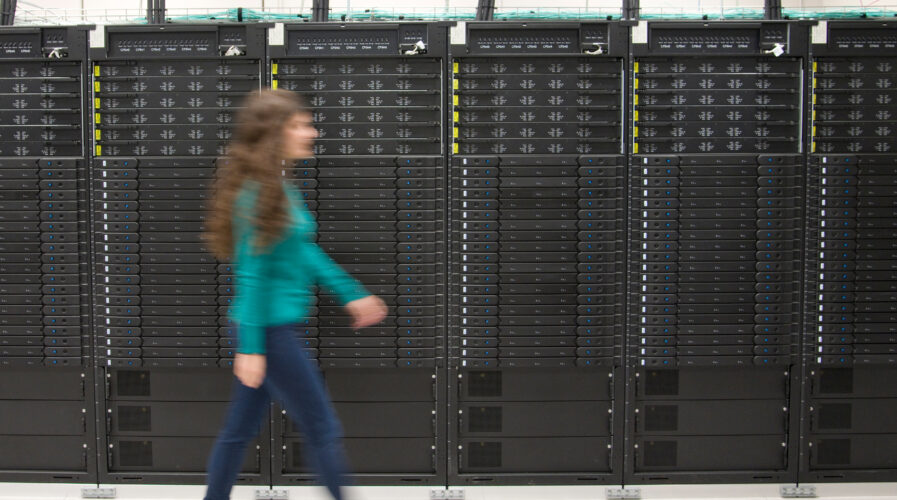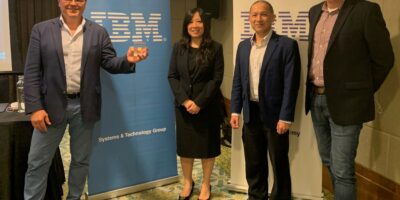
(Source – Shutterstock)
Extending mainframe investments with modern software development and DevOps solutions
Article by Nima Badiey, Global VP Alliances at GitLab
With the growing popularity of modern app design patterns and cloud-native services on hyperscalers like AWS, Google Cloud, and Microsoft Azure, it may seem that mainframes are no longer relevant to modern application development. However, mainframes are still used by 71% of Fortune 500 companies, handle 90% of credit card transactions, run 68% of production workloads, and continue to support 44 of the 50 largest banks and the top 10 insurance companies. As such, enterprise web and mobile applications rely heavily on back-end mainframe systems. But if mainframes continue to support the growing business, why are mainframe skills particularly scarce in a global IT market?
The Global IT skill shortage

Nima Badiey, Global VP Alliances at GitLab
IT professionals with extensive mainframe knowledge and experience tend to hold different skill sets. Their contemporaries, on the other hand, are new developers ‘born in the clouds’ who have been educated in newer programming languages, tools, and skill sets. The skills gaps driving the shortage are further exacerbated by the customized, expensive, and frequently inaccessible education and tools required to master Mainframe architectures.
This creates a conundrum for organizations still reliant on mainframe technology that are running mission-critical applications. As companies seek to modernize their infrastructure and application estates, modernization assessments such as the 5 R’s (Refactor, Replatform, Rehost, Retain, Retire) frequently opt to “retire” traditional mainframe applications because organizations no longer have the skills and modern tools to support mainframe development.
The era of specialized development tools is over
Legacy mainframe systems often required highly specialized development tools tied to legacy app and ops patterns. But new developers entering the workforce are learning and honing their skills on modern git-based systems, new open-source run-times, and modern DevOps practices. Highly specialized mainframe tools are frequently not taught or inaccessible to younger developers. In addition, developers are learning to build increasingly complex and interconnected systems that cross the boundaries between web, mobile, IoT, and edge clouds.
So, how do you modernize your software development approach and also make use of the next generation of talent in an organization dependent on – and still investing in – mainframes? A hybrid approach that allows these organizations to bring in new developers and leverage contemporary, agile software development practices like DevOps is the answer.
The benefits of a hybrid model
Cloud computing and its elasticity offer advantages for certain applications and use cases while centralized systems like IBM Z offer advantages for high transaction applications and use cases. A hybrid model affords developers the ability to compose their DevOps solution, write in any language they want, and deploy it in any hybrid cloud environment they choose, thereby increasing automation and Agile practices in their organization – and all while keeping their mission-critical mainframe system relevant for today and tomorrow. Companies are offering a complete DevOps solution ‘out of the box’ that reduces the learning curve for developers, lessens the waste and toolchain tax, and delivers seamless integrations.
Common workflows essential for hybrid environments
The problem some organizations are running into today with hybrid environments stems from a lack of standardization. Business innovation depends on the ability to quickly develop and deliver reliable software, but organizations are asking software development teams to create new applications, modernize platforms to hybrid cloud, and maintain integrations with their mainframe environment. This often involves multiple teams, processes, and tools, which makes it especially difficult to drive enterprise-wide DevOps standardization.
As organizations adopt a hybrid infrastructure to meet their needs, it becomes extremely important to have a common workflow (and tools) for continuous software development. The development workflow should be the same whether you are building a cloud-native container application or are refactoring an older one. In both scenarios, the same source code management, along with Git commit and merge-request workflows, should be used, regardless of the type of application code or where it is deployed. The advantage of using the same software development lifecycle methodology and tools allows an organization to drive an enterprise-wide DevOps strategy, despite the variation in skill sets.
Easing the talent burden
A hybrid approach may also help organizations to attract, develop and retain mainframe developers, allowing them to move between mainframe and cloud-based application development projects and gradually acquire new skills while enhancing developer job satisfaction and ensuring the organization is not exclusively reliant on either younger or more experienced developers. This has great flow-on benefits for an organization’s hiring abilities as well as its culture. Merging disparate groups, systems, and tools into a more homogeneous model can incubate innovation and drive diversity of thought; by freeing developers from legacy systems that limited their potential, they will be able to react faster to new ideas.
With organizations under pressure to modernize while carefully managing costs and hiring challenges, there is no better time to reimagine the way mission-critical workloads run and adopt a hybrid approach for mainframe systems.
The views in this article are that of the author and do not necessarily represent the views of Tech Wire Asia.
READ MORE
- The criticality of endpoint management in cybersecurity and operations
- Ethical AI: The renewed importance of safeguarding data and customer privacy in Generative AI applications
- How Japan balances AI-driven opportunities with cybersecurity needs
- Deploying SASE: Benchmarking your approach
- Insurance everywhere all at once: the digital transformation of the APAC insurance industry


